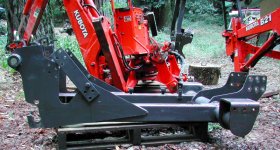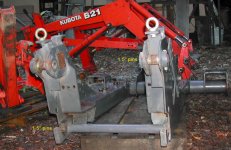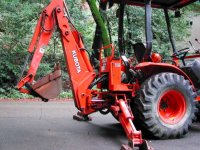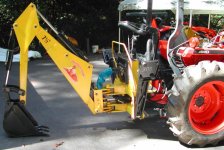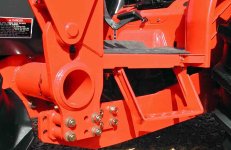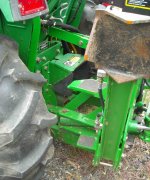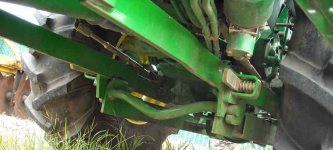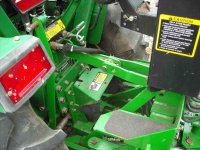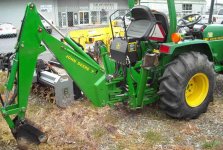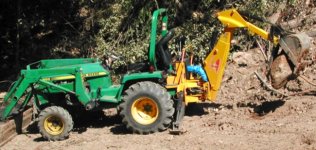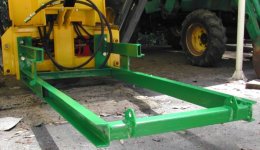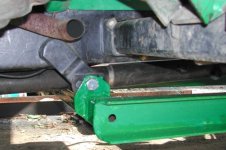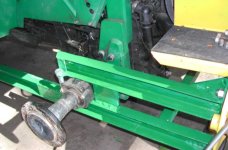The next subframes I made were for the JD 955, a much smaller tractor.
Both involved a hybrid subframe that was similar to the ladder subframes,
but also had structural elements that surrounded the axle housings. There
was no toplink used....the toplink brackets on the 955 are very small
anyway. Here are some pix of the 2nd one I did. The first one was a bit
different from this one, but I have no pix. I was on a learning curve.
The 955 was a great laboratory because I had several that I refurbished
and the low height of the rear axle housings was ideal for the ideal
mounting height of the hoe. The bottom of the hoe should be 12-14"
off the ground, primarily based on the outrigger design.
The result of this 2nd design was a very close-in hoe that worked very well.
Because the tractor was so light (less than 2000# naked), the hoe could
drag it very easily. The same hoe on the other tractors I did were much
more productive, due to 50% or more tractor weight.
In the photos, you can see that I used channel steel that was welded up so
that it fit precisely around the housings, which were made of cast steel. I
could not have done this if the housings were aluminum. All of the subframe
was permanently mounted to the hoe, with a forward connection to the
tractor frame at the mid mount mower bracket. It was very easy to mount/
dismount, which required the removal of the front 2 bolts and the
rear 2 bolts.
As an aside, the 955 with hoe and loader was very similar in size and
weight to the
B21. However, the 2500psi hydraulics and AG vs. IND tires
made the 955 a much more productive TLB, IMO. The 50% greater
engine power was also a plus, but second to the other factors.
